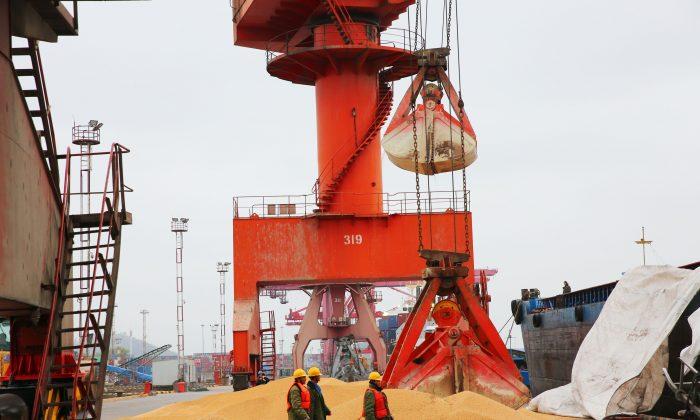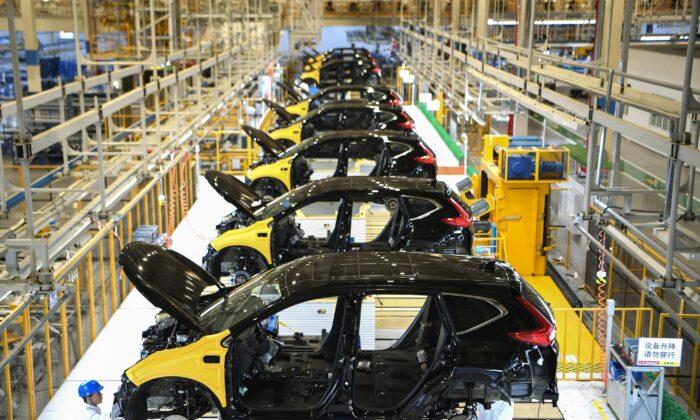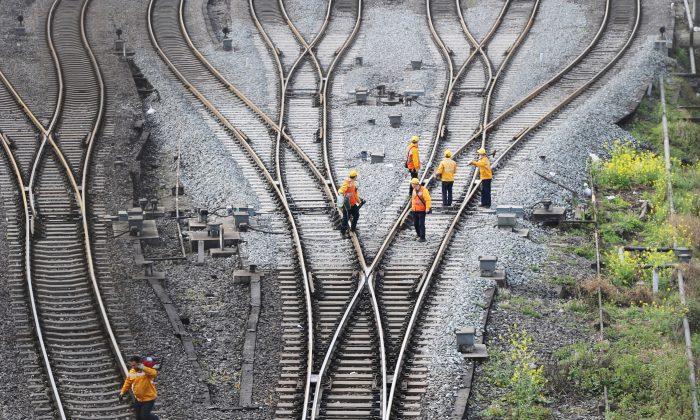News Analysis
Moody’s Investors Service downgraded the container shipping industry’s solvency to “negative” and warned that cash flow may fall by 30 percent as China demand caves.
As the world continues to sink deeper into a potential viral pandemic depression, the Baltic Dry Index has plunged by 76 percent from a high of $2,518 in September 2019 to $616 in March. The London-traded Baltic Dry Index tracks the average daily cost to ship an ocean-going container.
Despite the Sino–U.S. trade war still raging, Moody’s on Oct. 22, 2019, upgraded the outlook for APM-Maersk, the world’s largest container ship operator, to “positive.” On Dec. 20, Moody’s praised the Danish conglomerate again for achieving greater cost efficiencies. Maersk moves an average of 12 million containers, with 768 vessels through 300 ports in 130 countries each year.
But as New York University professor Nouriel “Dr. Doom” Roubini told the World Economic Forum on April 6, “Macroeconomic and financial outcomes of the coronavirus have materialized in just three weeks, in comparison to the three years this took for the 2008 financial crisis.”
Stock markets have crashed, credit markets have seized up, and credit spreads have spiked to 2008 levels, he said.
Financial firms such as JP Morgan, Goldman Sachs, and Morgan Stanley expect U.S. second-quarter GDP to fall by 24 to 30 percent. U.S. Treasury Secretary Steven Mnuchin warned that unemployment could hit 20 percent.
The U.N. trade and development agency said the COVID-19 pandemic may cost the world $1 trillion.
Allied Shipbroking’s research chief George Lazaridis told the Wall Street Journal on April 6 that with about 900 million people in Western nations under lockdown, ocean shipping “demand is caving, and supply chains are in distress.” He added, “Nobody knows when restrictions will be lifted, and the industry is in a battle for survival.”
The Chinese Communist Party (CCP) has relied upon economic growth to maintain its legitimacy and rule over 1.4 billion citizens. That’s also the reason why it’s important for the CCP to preserve the narrative that its authoritarian “Iron Fist” “defeated” the COVID-19 epidemic and resuscitated the nation’s economy.
China’s official Purchasing Manager’s Index (PMI), which tracks sales activity at 3,000 state-owned manufacturers, showed a contraction of a record low of 35.7 in February. However, the National Bureau of Statistics reported the PMI index rebounded with an expansionary reading of 52 in March.
The CCP leadership claims all of its ports are open and the nation is back to business as usual. But with a 30 percent global market share, China would have to be back to 715,000 container movements a day, and the shipping industry would be booming.
China, as the largest importer of coal, iron ore, wheat, and other commodities, is also the biggest customer for oceangoing bulk ships. But demand in the sector is so weak that the average daily freight rate for large bulkers stands at around $8,000 a day, substantially below the industry break-even of about $13,000 a day.
About half of the container ship sailings from China were canceled in the first quarter, but the industry assumed the volume would recover after the nation went back to work.
But Copenhagen-based SeaIntelligence Consulting CEO Lars Jensen told the Wall Street Journal that he’s currently seeing a 37 percent drop in demand for this quarter.
Despite APM-Maersk starting the year with $4.8 billion in cash, Moody’s downgraded the company’s container shipping unit from “stable” to “negative.” Moody’s warned that demand is still falling due to “factory closures and protectionist actions spreading around the world.”





